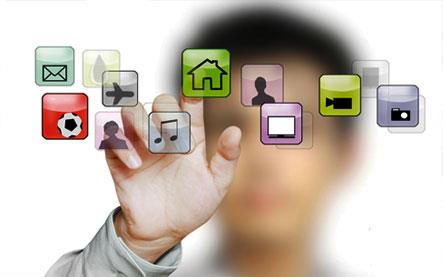
interactive whiteboards, voice communicators, educational software to learn mathematics, foreign languages, the rules of social behavior.
The information technology is helping children and young people who have learning difficulties with a network of computer programs and electronic aids. In jargon are called compensatory technological tools, in practice they are a kind of facilitators that help them to follow the lessons and make a path equal or at least similar to that of his companions.
The novelty is that these software, so far only a fee, there are now also free. In Bergamo, the Institute of Comprehensive Muzio of Colognola, there is a service, also free, which explains to teachers and parents what it is, how to install them on your PC and how to use them in teaching. It’s called the Territorial Support Center-New Technologies for Teaching (CTS-NTD) and is part of the Territorial Support Center (CTS) and the Territorial Centers for Inclusion (CTI), led by Professor Antonella Giannellini .
All are intended to encourage the inclusion in school. There speaks the coordinator Cristina Campigli . “The Center was founded in 2006 to respond to the problems of disability but since 2010 we also deal with specific learning disabilities (SLD), and hyperactivity disorder (ADHD) and special educational needs (BES), so all the world of fragility. We are three specialized teachers, in addition to the consultancy we also support educational and pedagogical and that makes a difference. “
Today the world of open source provides free software that can replace the 100% paid ones. “We start from these – says Campigli – with the belief that these instruments should be available to everyone and can be shared more, at home and at school.” “The technology – he said – it does not solve all problems but associated with a specific teaching method is a powerful tool to contain and control these diseases.”
For every need there is a program and technology tailored : for children and teenagers with dyslexia who have difficulty in reading, there are speech synthesis software that translates written text into speech and another that allows you to organize the text of study in maps and diagrams, with the value in more than putting in temporal sequence information and can add multimedia images. There are also audio books of classic novels that can be downloaded in mp3 format from AdAltaVoce of Radio RAI-3 or Liber Liber.
For the students with dyscalculia exist math software ranging from the calculator to voice programs draw or write an expression; DSA for students, are available software for foreign languages that help for pronunciation, phonetics, learning. The list goes on. Children and young people with autism can count on a program that translates the symbols into words and can communicate through these (alternative augmentative communication) and on software that helps you to edit social stories, or stories or phrases that help you understand what behaviors are socially correct and which are not. Finally, a utility tool cross very important for inclusion is the interactive whiteboard (IWB) has already been adopted in many schools, that is used like the monitor of a PC: it is a panel connected to a laptop or desktop that attaches to the wall, to write instead of the finger or pen you use the mouse.
“To teachers and parents – informs Campigli – we explain how to use these programs in teaching and also as opening up the PC, how to insert limiters to slow the controls and prevent the baby to switch from one application to another and how to set and display the timer with the time it takes to carry out the exercise, which is a very useful feature for hyperactive children and with little attention. “
The door is active from September to June, Monday afternoon from 14.30 to 18.30 to the CTS Bergamo New technologies for teaching at the Institute of Comprehensive School” V. Muzio “Via San Pietro to fields 1, Bergamo. You can bring your own computer and get help to install the software or just bring a USB stick. You should make an appointment by phone at 035.316754 (fax 035 312306 – email: segreteria@icmuzio.it).
No comments:
Post a Comment